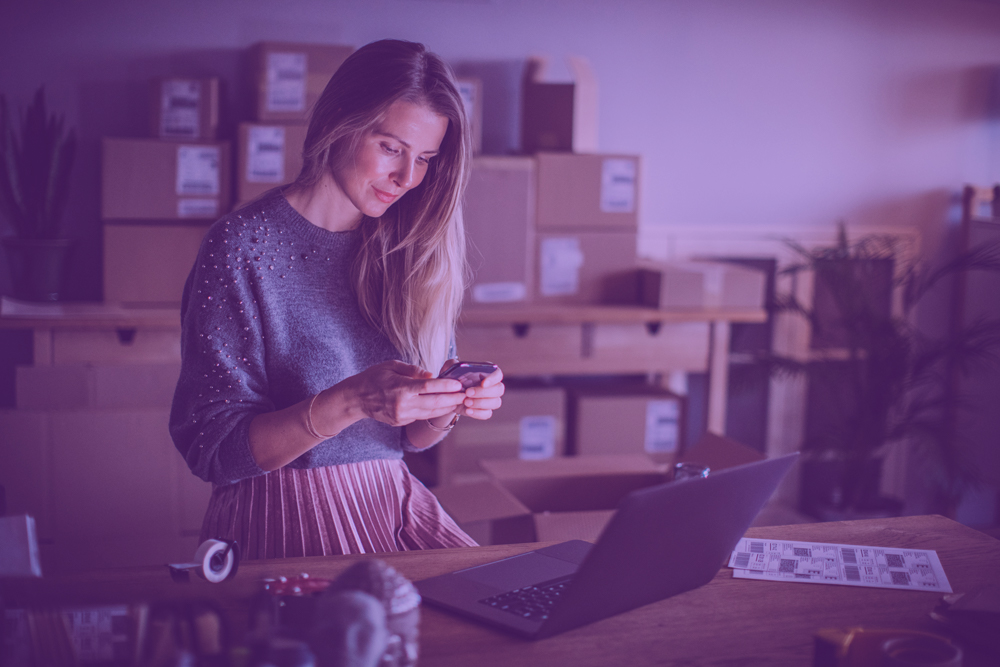As companies strive to make the most of their data and advanced analytics, front runners are discovering the unique value of physical location. Virtually every data point available has some kind of location component attached to it.
Business customers typically have a physical presence that takes the form of office space, retail locations, warehouses, or production facilities. Individual consumers may be associated with a mailing address, a residence, vacation properties, and so on. Public infrastructure consists of bridges, buildings, and offices and includes individual assets such as streetlights, manhole covers, and even trash receptacles.
Location can also be dynamic. Consumers flow into and out of a busy shopping district, and using that aggregated and anonymized data can reveal key patterns that can be used to:
- Enhance the reach and relevance of targeted marketing messages
- Improve retail site selection
- Provide valuable input for urban planners
Weather and road traffic, too, are dynamic – always changing, but highly relevant to businesses, governments, and individuals.
Location intelligence provides a critical link that joins existing data elements with the geospatial context surrounding them. By understanding where your customers live, for example, you can glean meaningful insights about their income level, lifestyle, and access to services.
Let’s dive in and explore some of the key trends in location intelligence for 2024.
Trend 1. Location Intelligence is a Key Differentiator
Location intelligence (LI) continues to prove to be a key market differentiator, helping you reduce risks, maintain customer satisfaction, and maximize internal resources.
And LI solutions that require modest investment can drive a high return on investment for both operational and analytical uses across the enterprise.
Here are just a few of the many ways that investments in location intelligence help you stay on track with your objectives:
- Telco: expand your network and increase coverage. Location intelligence can help you find the right place for a new cell tower that covers more serviceable locations and doesn’t overlap with existing networks.
- Financial services: consolidate a branch location. Location intelligence benchmarks locations against one another, evaluates performance and cannibalization, and informs cost analysis of the potential consolidation.
- Insurance: gain a comprehensive view of property risks. Insurers can use location intelligence to help inform optimal policy pricing and prevent fraudulent claims (for example, if you know a location didn’t get hail on a particular Tuesday, you can challenge a claim that states otherwise).

Trend 2. Democratization of Location Intelligence
When it comes to location intelligence, we’re in an era of ever-expanding access; access to real-time delivery tracking, live traffic updates, and enhanced mapping and navigational capabilities right in the palm of our hand.
Think about it: how often do you need to find a physical directory when making your way through indoor venues like shopping malls, airports, and university campuses? While this was once commonplace, it’s now become the slower, old-fashioned way of navigating.
Travelers, for example, can now find their way through unfamiliar airports more easily than in the past, visualizing the route they must follow to get to their next gate. Likewise, they quickly and easily determine the locations of restaurants, convenience stores, restroom facilities, and other important amenities.
GPS-enabled smartphones offer a simple means of notifying the public of imminent hazards. Emergency management agencies can transmit warnings of potential flash flooding, tornadoes, or storm surges – reaching a wide audience with highly relevant information. Universities employ similar mechanisms to issue shelter-in-place orders in the face of imminent threats to student safety.
In short, with access to a smart device, consumers open up a world of location intelligence capabilities at their fingertips – and that accessibility will only continue to grow.
But despite the democratization of LI tools among the general public, it’s also worth noting that businesses at large still have hurdles to overcome in order to effectively use location intelligence.
Some businesses have heavily leveraged location intelligence for years – like real estate for property valuation, insurance for property risk assessment, and telecommunications for service coverage mapping. But business users have typically relied heavily on the expertise of GIS specialists to get the insights they need.
As business users seek to streamline this process for faster decision-making, and as consumers continue to invest in location-enabled applications, the demand for easy, accessible location intelligence is expected to grow in 2024 and beyond.
Read our eBook
Validation and Enrichment: Harnessing Insights from Raw Data
In this ebook, we delve into the crucial data validation and enrichment process, uncovering the challenges organizations face and presenting solutions to simplify and enhance these processes.
Trend 3. Data Enrichment Produces Better Artificial Intelligence Results
In 2023 the topic of artificial intelligence had the world buzzing, and there’s no questioning the fact that it’s already changing how businesses across industries operate.
While the use cases for AI are many, you need to make sure that the data that trains your models has data integrity – maximum accuracy, consistency, and context – to produce the best results.
Enriching your data with relevant third-party datasets and spatial insights is key to improving its overall value, accuracy, and usability for AI.
Whether your priorities are around compliance, data-driven decision-making, or beyond, high-quality enrichment data provides additional context that helps you produce better outcomes, cut costs, and boost user trust.
When you train artificial intelligence models with relevant location-based datasets, you open the door to a vast amount of information about the domain in question.
To discover buying patterns among your customers and others within your market, for example, it’s very helpful to feed your model with business data about where those consumers live, work, shop, and play. Location intelligence links a consumer’s location in time and space to an array of different data points that can increase the effectiveness of the model.
The better your data, and the more you enrich it with relevant context, the greater the return on your AI investments.
Trend 4. Location Intelligence is Driving Data Integrity
In the 2023 Data Integrity Trends and Insights Report, published in partnership between Precisely and Drexel University’s LeBow College of Business, an overarching theme was clear: trusted data is more critical than ever, and data integrity is key to unlocking and maintaining that trust.
Over 450 data and analytics professionals worldwide were surveyed for the report, and 77% say data-driven decision-making is the leading goal of their data program. But, only 46% rate the quality of their data as “high” or “very high.”
Location and data enrichment are important elements of data integrity, driving the context needed to make better decisions and gain an edge over your competition.
77% of survey respondents report an average to very high reliance on location data for decisions related to marketing, facilities, risk assessment, logistics, and other areas. And that’s not surprising when you consider all the key business questions that location intelligence provides context into, including:
- where are my competitors?
- can I deliver on time?
- what is my target market?
- are my investments in risky areas?
It’s worth noting, though, that to maximize the potential of location data, you need to address data quality issues first. 41% say that poor address data quality is the top challenge preventing effective use of location data, so it’s critical to standardize and verify that data to ensure it’s fit for purpose.
The impact of location data also hinges on a strong data governance framework that aligns people, processes, and technology so you can understand and trust your location-based data and metadata to meet your most pressing needs.
By addressing data quality issues and breaking down siloes, you advance your data integrity journey and can start delivering on the promises of context-rich location data – making decisions that help you reach new customers, optimize internal resources, drive innovation and differentiation in your products and services, and more.
For more insights into the crucial role of location intelligence and data enrichment in your data integrity journey, read our eBook: Bring Essential Context to Business Decisions with Location Intelligence and Data Enrichment.







